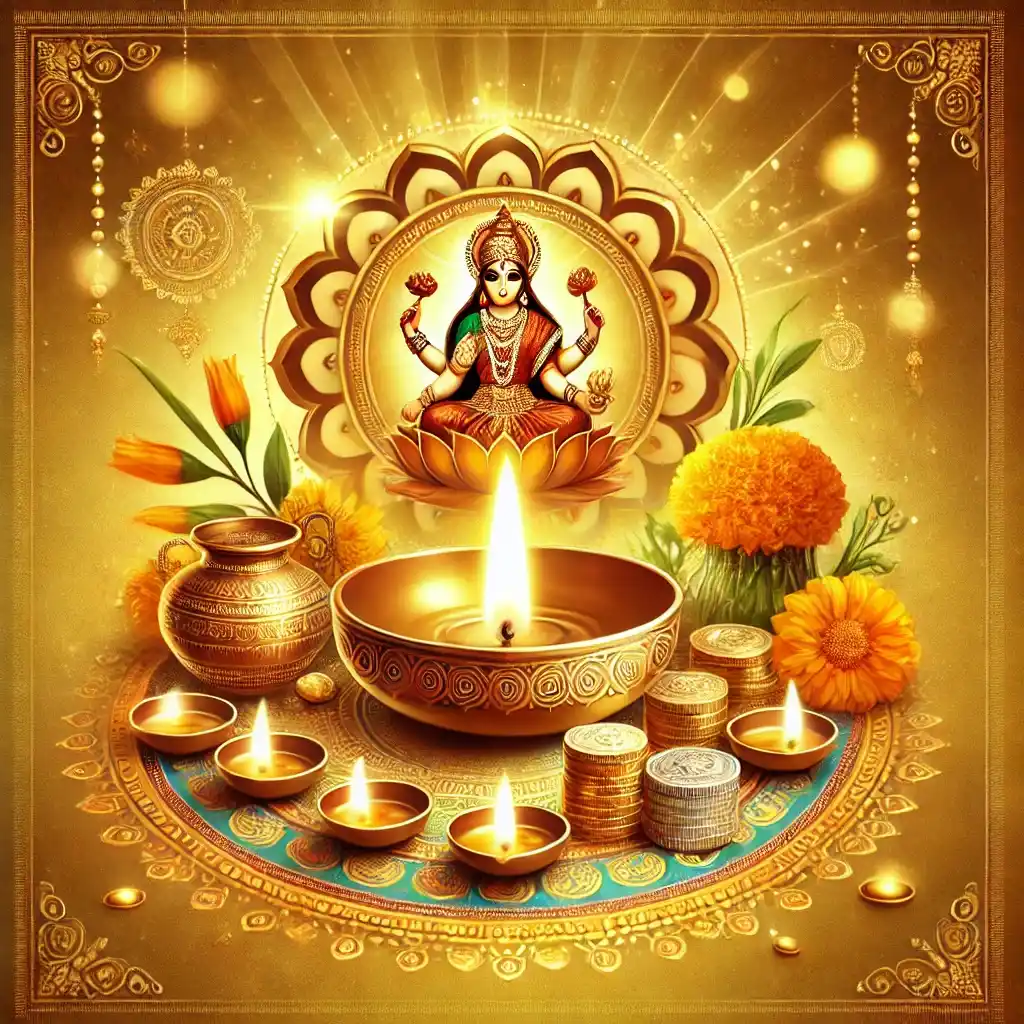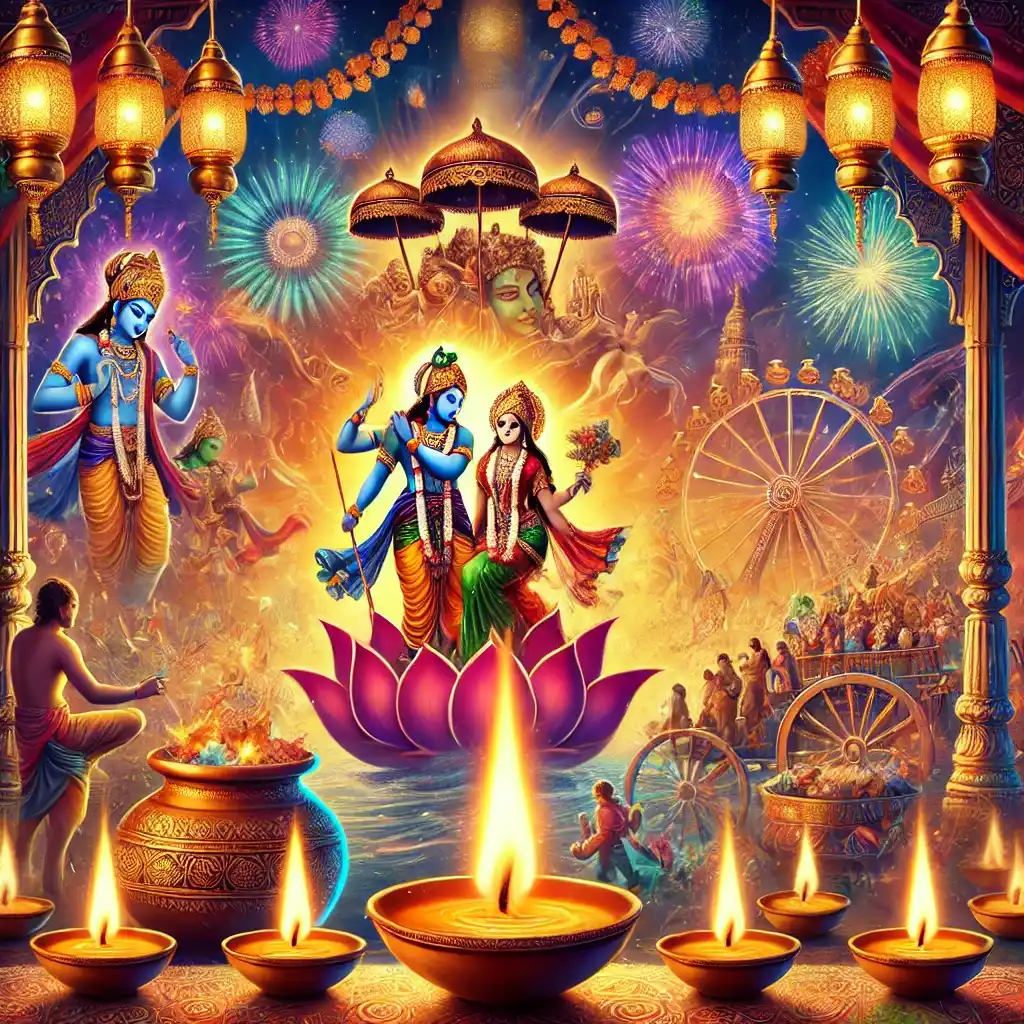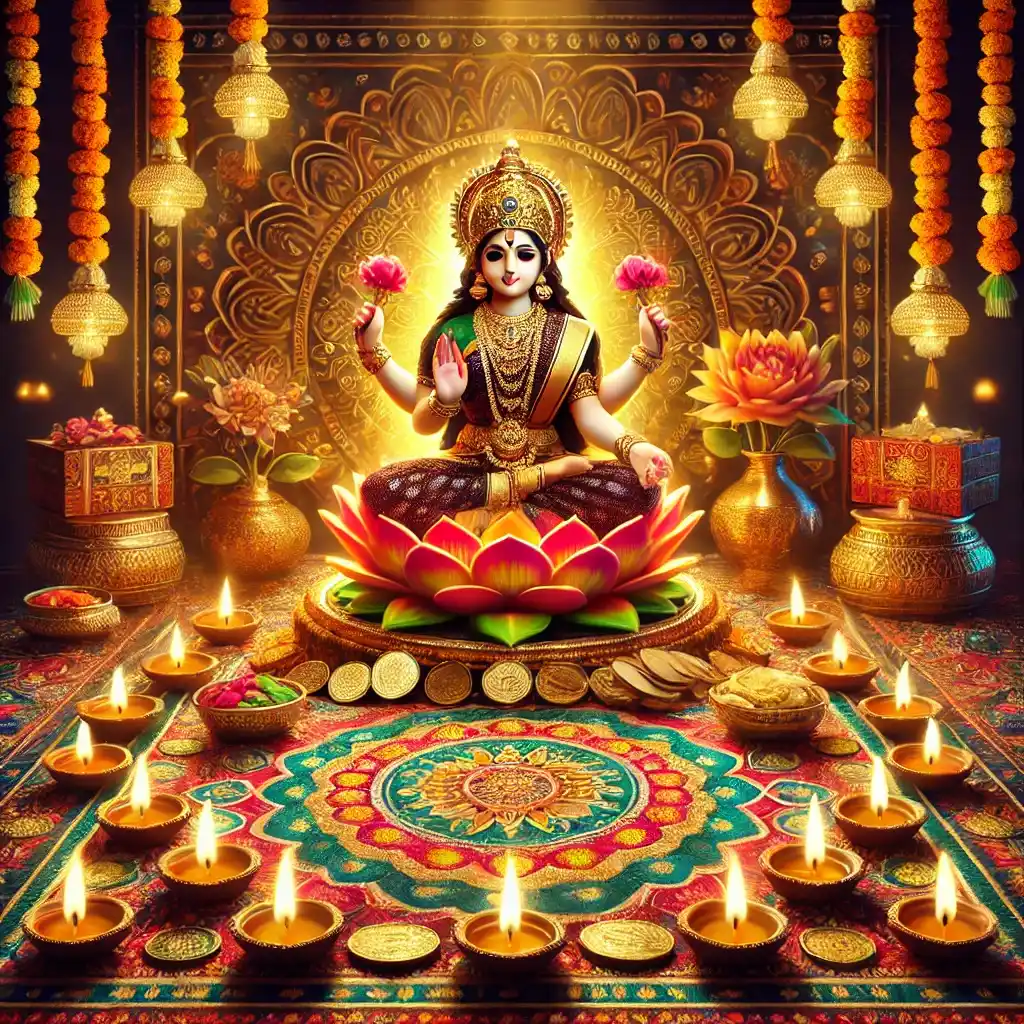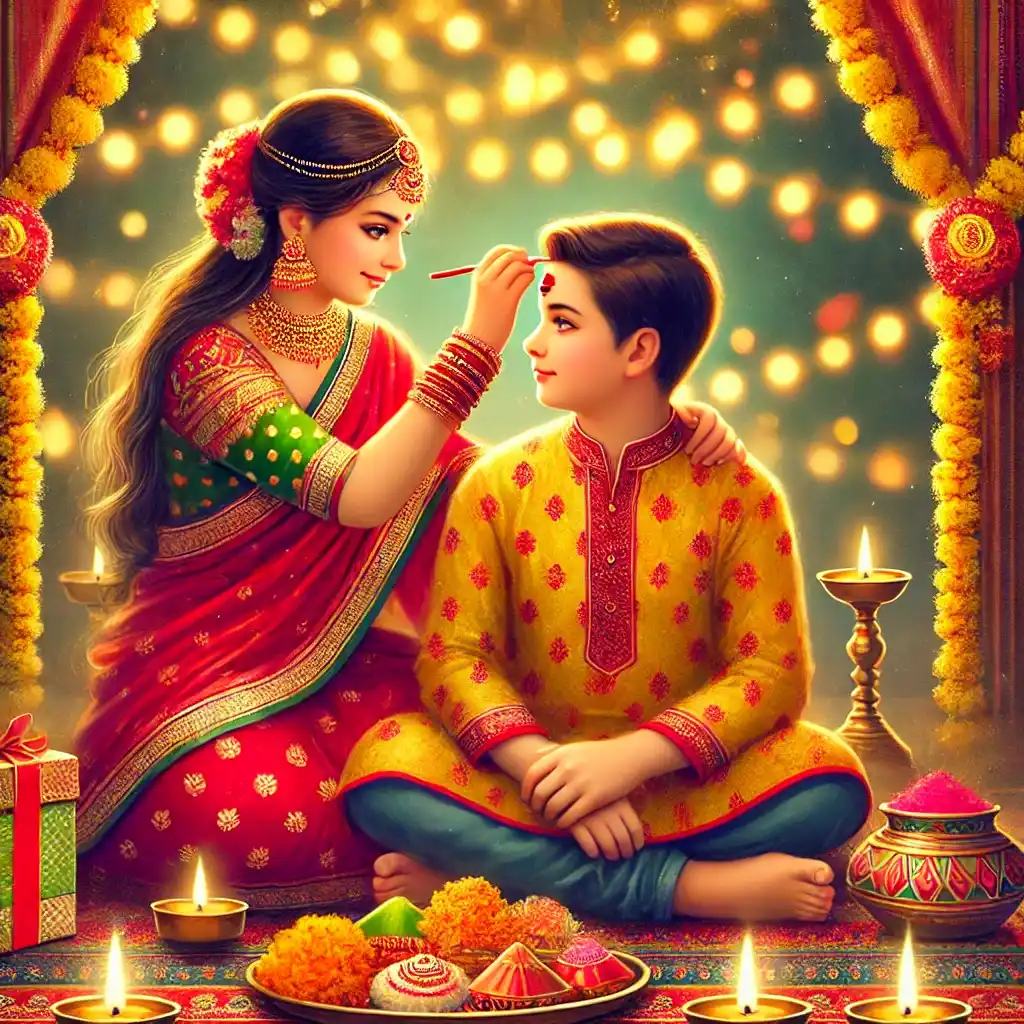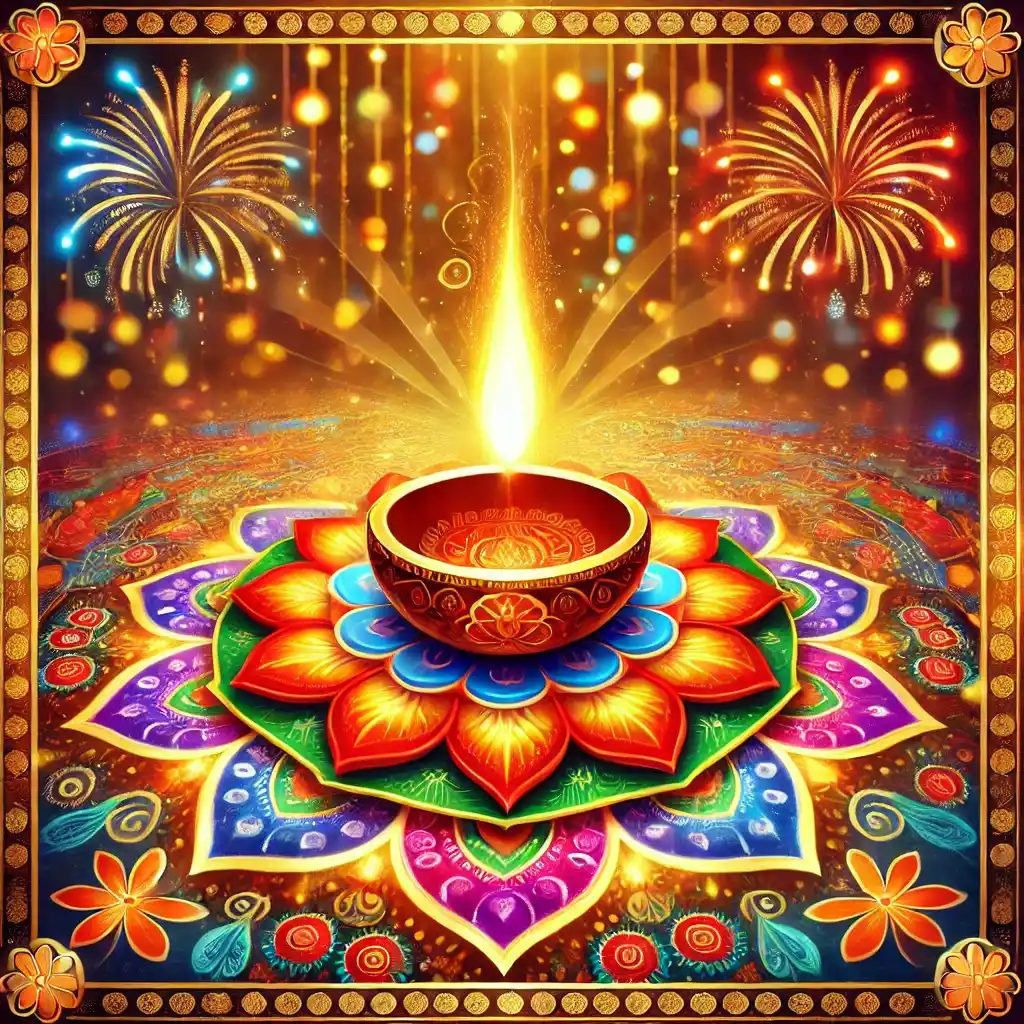
Diwali
Diwali
The Festival of Lights
Diwali, also known as Deepavali, is one of the most celebrated and revered festivals in India, and its influence extends globally. This vibrant festival is often referred to as the “Festival of Lights,” symbolizing the victory of light over darkness, good over evil, and knowledge over ignorance. The term "Diwali" is derived from the Sanskrit word Deepavali, meaning "a row of lights," which reflects the practice of lighting earthen lamps (diyas) to illuminate homes, streets, and temples during the festival. It is a time of renewal, where families come together, homes are cleaned and decorated, and the air is filled with the sounds of fireworks and joy.
While Diwali holds special significance for Hindus, it is also celebrated by Jains, Sikhs, and some Buddhists, each associating the festival with different historical and religious narratives. This makes Diwali a festival that transcends boundaries, becoming a unifying celebration of life, light, and prosperity. In this detailed guide, we explore the meaning, history, and significance of Diwali, along with its rich traditions and evolving modern-day celebrations.
The Significance of Diwali
Diwali is much more than just a religious observance—it is a celebration of life, an opportunity to strengthen relationships, and a festival that symbolizes the triumph of hope and goodness. The five-day festival has deep cultural and spiritual roots, with each day holding unique significance. Diwali is not just confined to lighting diyas and bursting fireworks; it has rich traditions that span multiple dimensions of Indian culture, including rituals, food, and familial bonding.
Dhanteras (Day 1): Celebrating Wealth and Prosperity
Dhanteras marks the first day of Diwali, and it is primarily associated with prosperity and good fortune. On this day, devotees worship Lord Dhanvantari, the god of Ayurveda and health, as well as Goddess Lakshmi, the deity of wealth and abundance. It is believed that purchasing new items, especially gold, silver, or household utensils on Dhanteras, brings good luck. Business owners and traders, in particular, regard this day as highly auspicious, marking the beginning of a new financial year.
Many people begin cleaning and decorating their homes on Dhanteras, preparing for the days ahead. Households are adorned with fresh flowers, rangolis (colorful designs), and of course, the lighting of diyas and lamps. The essence of Dhanteras lies in attracting positivity and wealth into one's life, a theme that permeates throughout the entire Diwali festival.
Naraka Chaturdashi (Choti Diwali, Day 2): Victory of Good Over Evil
The second day of Diwali, Naraka Chaturdashi, also known as Choti Diwali, is significant in various parts of India for celebrating the victory of Lord Krishna over the demon Narakasura. The defeat of Narakasura by Krishna is symbolic of the triumph of good over evil and light over darkness. People begin this day with early morning baths using fragrant oils and herbal pastes, which is believed to cleanse the body and soul, removing any negativity.
This day is marked by cleaning and purifying homes, offering prayers, and lighting small diyas as a precursor to the main Diwali night. In many parts of South India, people celebrate this day with great fervor, as it marks the actual Diwali for them. Small-scale fireworks and festive gatherings take place in the evening, although the main celebrations are reserved for the following day.
Lakshmi Puja (Main Diwali, Day 3): Honoring the Goddess of Wealth
The third day of Diwali is the most significant and widely celebrated. It is the day when Goddess Lakshmi, the goddess of wealth and prosperity, is worshipped. Lakshmi Puja is performed with great devotion in every household. Families clean their homes meticulously to invite the blessings of the goddess, as it is believed that she visits only those homes that are clean, pure, and well-lit. The lighting of diyas and candles on this day is meant to guide Lakshmi into homes, bringing wealth and good fortune.
The evening of Lakshmi Puja is filled with rituals. Diyas are placed at the entrance of homes, in windows, and around temples, symbolizing the victory of light over darkness. Families come together to offer prayers, fruits, sweets, and flowers to Lakshmi. In business communities, new account books are opened, and prayers are offered for success in the coming year. This day also sees the most vibrant display of fireworks, as the night sky lights up in celebration.
Govardhan Puja (Day 4): Honoring Lord Krishna's Deed
On the fourth day of Diwali, known as Govardhan Puja, people celebrate Lord Krishna's lifting of the Govardhan Hill. According to Hindu mythology, Lord Krishna lifted the hill to protect villagers from a devastating storm sent by Indra, the god of rain. This event symbolizes Krishna’s protection and his role as the divine caretaker of humanity. In many regions, this day is also known as Annakut, meaning "mountain of food." Large quantities of food are prepared and offered to Krishna, representing gratitude and abundance.
In parts of Northern India, especially in states like Uttar Pradesh, Gujarat, and Punjab, people build small mounds of cow dung, symbolizing the Govardhan Hill, and worship them. This day is also celebrated as the start of the new agricultural year in some regions, highlighting the strong connection between Diwali and nature.
Bhai Dooj (Day 5): Celebrating Sibling Bonds
The fifth and final day of Diwali is Bhai Dooj, a celebration of the bond between brothers and sisters. Similar to the festival of Raksha Bandhan, Bhai Dooj sees sisters perform a tilak (ceremonial mark) on their brothers' foreheads and pray for their long life and prosperity. In return, brothers give gifts to their sisters and vow to protect them from harm. The emotional essence of Bhai Dooj lies in the strengthening of family ties and expressing gratitude for sibling relationships.
Families come together on this day, sharing meals and spending quality time with one another. Bhai Dooj emphasizes the importance of love, care, and respect within families, rounding off the Diwali celebrations with warmth and affection.
The Legends Behind Diwali
Diwali is steeped in mythology, and its origins can be traced back to ancient Hindu texts and legends. The festival is celebrated for different reasons across India, with each region attributing its festivities to a specific mythological event. These legends, passed down through generations, offer a deeper understanding of the festival's spiritual significance.
Return of Lord Rama: The Ramayana Connection
One of the most popular legends associated with Diwali is the return of Lord Rama, his wife Sita, and his brother Lakshmana to their kingdom, Ayodhya, after a 14-year exile. According to the Hindu epic Ramayana, during this exile, Rama defeated the demon king Ravana, who had kidnapped Sita. After his victory, the people of Ayodhya welcomed him back by lighting oil lamps and decorating the city with flowers and lights. This act of lighting lamps symbolized the dispelling of darkness and the return of peace and prosperity.
The celebration of Diwali in Northern India is closely tied to this legend. The lighting of diyas signifies the joy of Rama’s return and the victory of righteousness. This narrative has been a part of Indian culture for centuries and continues to be a central theme in Diwali celebrations.
The Defeat of Narakasura: Celebrating Krishna’s Triumph
In Southern India, Diwali is primarily associated with the defeat of the demon Narakasura by Lord Krishna. Narakasura was a powerful demon who ruled with tyranny and caused much suffering. His defeat by Krishna marked the end of his reign of terror, and the celebration of Diwali is a reflection of this victory. The day is seen as a time to dispel negativity and welcome the triumph of good forces.
This narrative emphasizes the moral victory over evil and serves as a reminder to live a life of righteousness and compassion. The early morning baths and rituals on Naraka Chaturdashi are symbolic of washing away sins and beginning life anew.
Vamana and King Bali: A Tale of Devotion and Humility
In parts of Kerala and Maharashtra, Diwali is associated with the legend of Vamana, an incarnation of Lord Vishnu, and King Bali, a generous but ambitious demon king. According to the legend, Bali had become so powerful that he threatened the gods. To curb his power, Vishnu appeared as a dwarf (Vamana) and tricked Bali into giving away his kingdom. Despite this, Bali’s devotion to Vishnu was so great that Vishnu granted him the boon of returning to earth once a year to visit his people. Diwali is believed to be the time when Bali returns, and people celebrate his generosity and devotion.
This story highlights the themes of humility, devotion, and the balance of power. It reflects the belief that even the most powerful beings are subject to divine will and that devotion to the divine can lead to salvation.
Lakshmi’s Emergence: The Goddess of Wealth and Prosperity
Another significant story tied to Diwali is the emergence of Goddess Lakshmi during the churning of the cosmic ocean, known as Samudra Manthan. According to Hindu mythology, both gods and demons churned the ocean to obtain amrita (the nectar of immortality). During this process, Lakshmi, the goddess of wealth and prosperity, emerged from the ocean, bringing fortune and abundance to the world. Diwali is believed to be the night when Lakshmi blesses the earth with her presence, and as a result, people worship her on the third day of the festival to seek her blessings.
Lakshmi’s role in Diwali highlights the festival’s association with wealth, success, and material prosperity. Her worship during Lakshmi Puja is one of the most significant aspects of the celebration, as devotees believe her blessings will bring prosperity and happiness in the coming year.
How Diwali Is Celebrated Today
Modern-day Diwali celebrations are a fusion of traditional rituals and contemporary practices. While the essence of Diwali remains rooted in religious and cultural customs, the way people celebrate has evolved over time. From vibrant fireworks displays to eco-conscious celebrations, Diwali continues to adapt to the changing world while retaining its core values of family, community, and spirituality.
Lighting of Diyas and Candles
The lighting of diyas, candles, and lanterns is the most recognizable aspect of Diwali. Diyas are small, clay lamps filled with oil and a cotton wick, symbolizing the dispelling of darkness and the triumph of light. Homes, streets, temples, and even businesses are decorated with rows of diyas, creating a warm and festive atmosphere.
The practice of lighting diyas has deep spiritual significance. It is believed that light brings the presence of the divine into homes and hearts, and each diya represents a prayer for prosperity and happiness. In modern times, people also use electric lights, fairy lights, and decorative lamps to add to the brightness of the festival. The illumination during Diwali is not just physical; it is also a symbol of the inner light that guides us toward truth and righteousness.
Fireworks and Sparklers
Fireworks are an integral part of Diwali, symbolizing the joy and exuberance of the festival. The bursting of crackers and fireworks is believed to drive away evil spirits and negative energy, making way for positivity. While children particularly enjoy this aspect of Diwali, the colorful displays of fireworks lighting up the night sky are a sight cherished by all.
In recent years, however, concerns about air pollution and noise pollution have led to a growing movement toward eco-friendly Diwali celebrations. Many families now opt for quieter and less polluting fireworks, or even forgo them entirely in favor of more environmentally sustainable practices. Despite these changes, fireworks continue to be an iconic part of Diwali celebrations, and their association with joy and festivity remains strong.
Rangoli Designs
Rangoli is an ancient art form that involves creating intricate designs on the floor using materials such as colored rice, sand, or flower petals. During Diwali, it is customary to create rangoli patterns at the entrance of homes and temples to welcome guests and the goddess Lakshmi. These designs are often passed down through generations and vary in complexity, from simple geometric shapes to elaborate floral motifs.
Rangoli holds both aesthetic and spiritual significance. It is believed that the colorful designs attract positive energy and create a festive atmosphere. In many regions, women take pride in showcasing their artistic skills by creating elaborate rangoli designs that become the focal point of Diwali decorations. The tradition of rangoli emphasizes the importance of beauty, creativity, and hospitality in the celebration of Diwali.
Lakshmi Puja
Lakshmi Puja, performed on the main day of Diwali, is the most important religious ritual of the festival. It is believed that Goddess Lakshmi visits homes on this night, bringing wealth and prosperity to those who invite her with pure hearts and clean homes. The puja typically involves offerings of sweets, flowers, and fruits, as well as the lighting of diyas and incense.
During Lakshmi Puja, families gather to perform prayers and seek the goddess’s blessings for success and well-being. The ritual is often accompanied by the chanting of hymns and mantras, and in some homes, people also worship Lord Ganesha, the remover of obstacles, alongside Lakshmi. The puja represents the culmination of all preparations for Diwali, and it is a moment of deep spiritual connection and devotion for devotees.
Exchange of Gifts and Sweets
Diwali is also a time for exchanging gifts and sharing joy with loved ones. Traditionally, families exchange sweets, dry fruits, and snacks as a symbol of love and goodwill. Popular Diwali sweets include laddoos, barfis, jalebis, and gulab jamun, which are often prepared at home or bought from local sweet shops. These treats are not only enjoyed by family members but also distributed among friends, neighbors, and colleagues.
In addition to sweets, modern Diwali celebrations often involve the exchange of gifts such as clothes, jewelry, gadgets, and home decor items. Gifting has become an important part of Diwali, as it strengthens bonds between family and friends. The act of giving during Diwali embodies the spirit of generosity and abundance that defines the festival.
Diwali and Sustainability: The Changing Face of Celebrations
As global awareness of environmental issues grows, Diwali celebrations have also seen a shift toward sustainability. Concerns about air pollution from fireworks, excessive use of plastic, and the environmental impact of mass production have led to a movement for a "green Diwali." Many people are now choosing eco-friendly alternatives to traditional celebrations, such as using clay diyas instead of plastic lamps, making natural rangolis with flowers and organic powders, and reducing the use of fireworks.
Eco-friendly Diwali celebrations also focus on reducing waste by using biodegradable materials for decorations, reusing items from previous years, and avoiding single-use plastics. Some communities even organize group celebrations to minimize the environmental footprint, encouraging people to celebrate together rather than individually.
This shift toward sustainability is not only about protecting the environment but also about preserving the true spirit of Diwali. By reducing the focus on materialism and excess, people are rediscovering the deeper meaning of the festival—celebrating light, hope, and togetherness.
Diwali Celebrations Around the World
Diwali is not just limited to India—it is celebrated by millions of people around the world, especially in countries with significant Indian diaspora populations. In places like Nepal, Sri Lanka, Malaysia, Singapore, Fiji, Trinidad and Tobago, and Mauritius, Diwali is a public holiday and is celebrated with much enthusiasm. These celebrations often include local customs and traditions, blending the spirit of Diwali with regional cultures.
In Western countries such as the United States, the United Kingdom, Canada, and Australia, Diwali is gaining recognition as a major cultural event. Cities like London, New York, and Toronto host grand Diwali events that feature fireworks, cultural performances, and food festivals. Iconic landmarks such as the Sydney Opera House and the Empire State Building are often lit up in festive colors to mark the occasion.
The global celebration of Diwali reflects the festival's universal appeal. Its messages of peace, harmony, and the triumph of good resonate with people from diverse backgrounds, making Diwali a truly global event.
Conclusion
Diwali is a festival that transcends its religious origins to become a celebration of life, hope, and unity. Its rich traditions, mythological stories, and modern-day adaptations make it one of the most cherished festivals in the world. Whether celebrated with grand fireworks displays or through quiet prayers and simple diyas, Diwali continues to inspire people with its timeless message of light overcoming darkness.
As you light your diyas this Diwali, may the warmth and light fill your home with happiness, prosperity, and peace. Let the festival be a reminder that even in the darkest of times, light and goodness will always prevail.
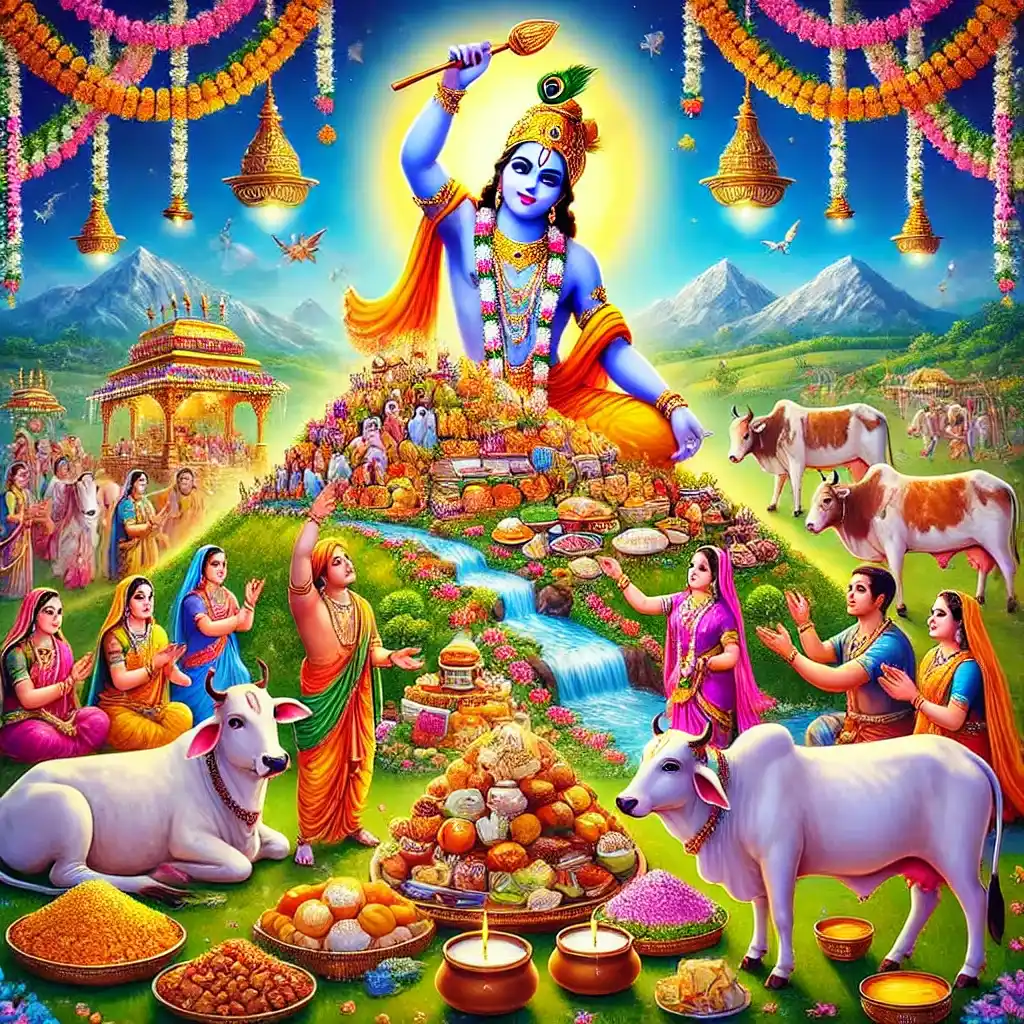
Explore the spiritual significance of Govardhan Puja, celebrated on the fourth day of Diwali. Learn about its origins, rituals like Annakut offerings, and its environmental message as Lord Krishna lifts Govardhan Hill to protect Vrindavan. Discover how different regions in India celebrate this festival with devotion and gratitude towards nature

Explore the latest and most popular products available on Amazon, handpicked for your convenience! Whether you're shopping for tech gadgets, home essentials, fashion items, or something special, simply click the button below to view the product on Amazon. We’ve partnered with Amazon through their affiliate program, which means that if you make a purchase through this link, we may earn a small commission at no extra cost to you. This helps support our site and allows us to continue providing valuable content. Thank you for your support, and happy shopping!
